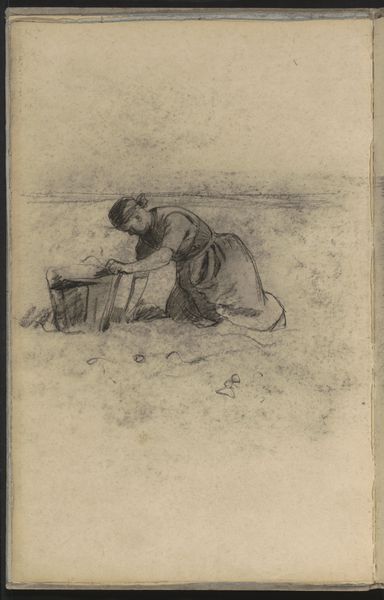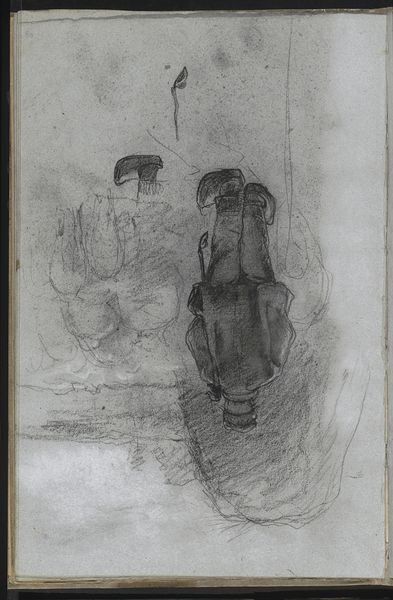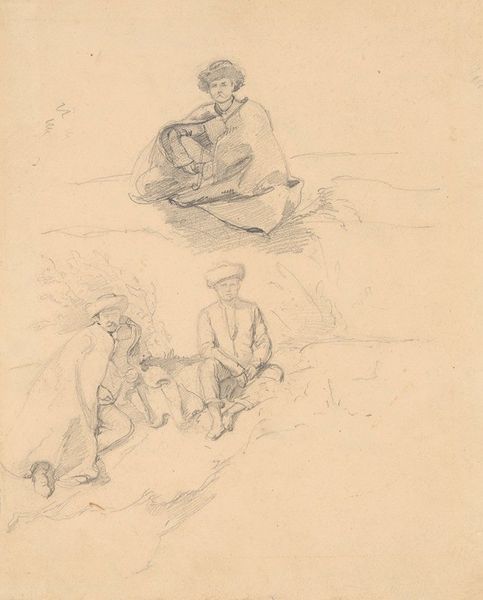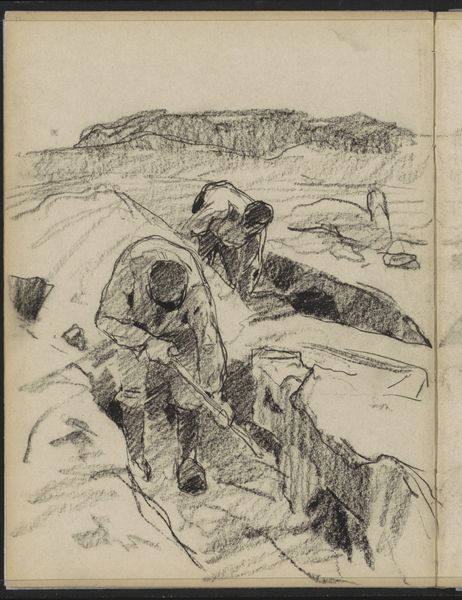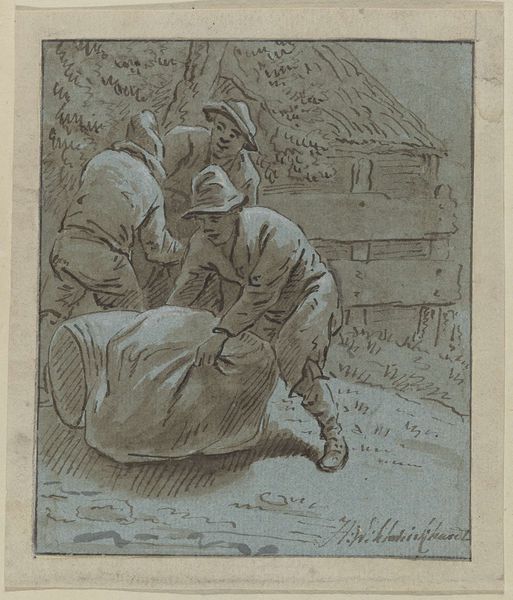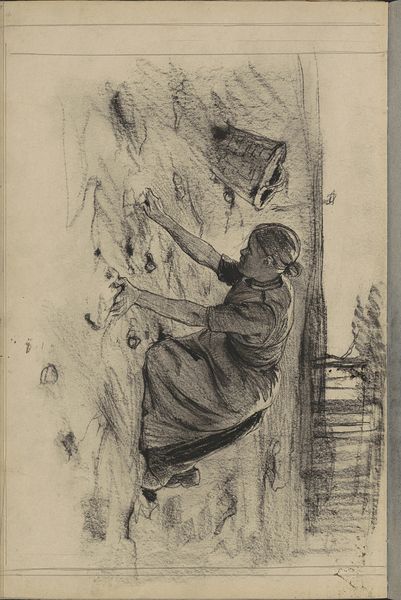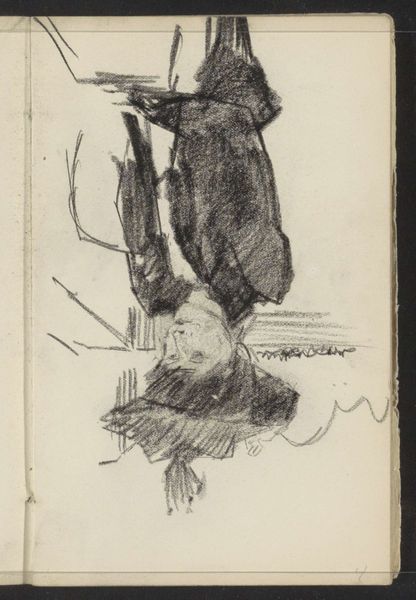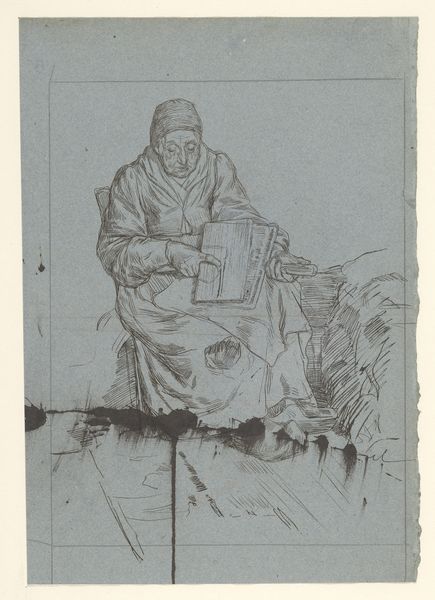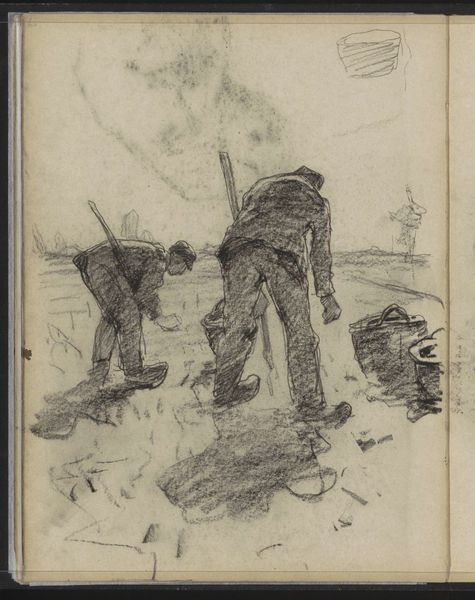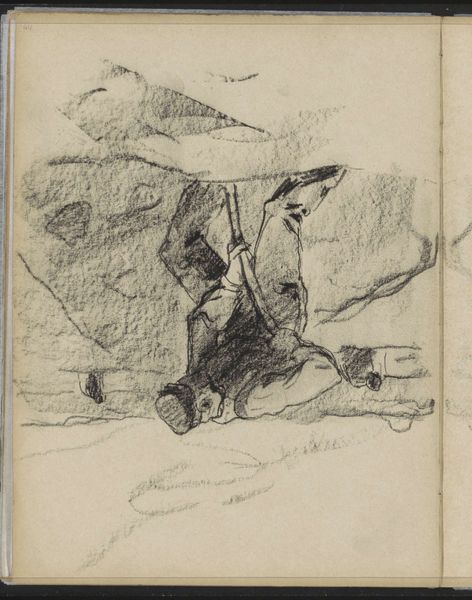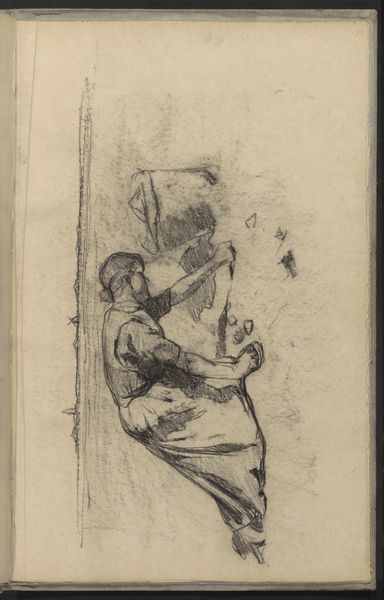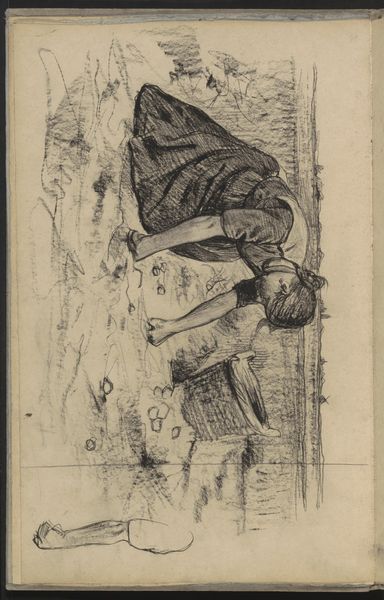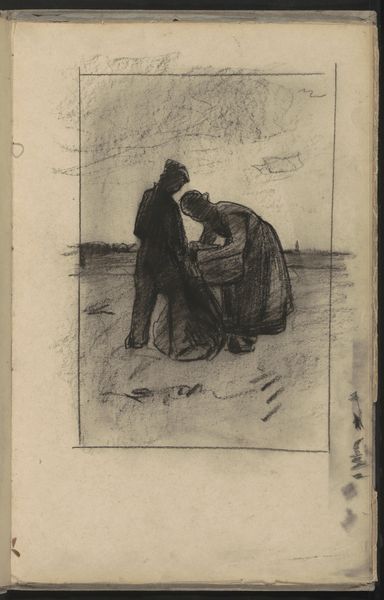
drawing, pencil
#
drawing
#
dutch-golden-age
#
pencil sketch
#
landscape
#
figuration
#
pencil
#
genre-painting
#
realism
Copyright: Rijks Museum: Open Domain
Curator: Here we have Willem Witsen's "Aardappeloogst," a drawing rendered in pencil, dating back to approximately 1886. It resides here at the Rijksmuseum. Editor: My first thought is the raw texture of this piece. The scratching of the pencil really emphasizes the labor and the earth itself. You can almost feel the weight of the soil they’re digging in. Curator: Absolutely. Witsen came from a privileged background but frequently depicted working-class subjects. This drawing underscores a burgeoning social realism movement, portraying everyday lives—lives that, in many ways, supported his own. How does this sketch speak to that socio-political tension to your eyes? Editor: The very medium, the pencil, is key. It’s immediate, accessible. Think about the physical act—the pressure applied, the lead wearing down. It’s a direct connection between Witsen and the act of representing labor, reminding us of the direct, physical nature of harvesting potatoes. What I'm wondering is, how would this piece be perceived versus, say, an oil painting on a similar subject from the time? Curator: Well, exhibiting drawings in major salons was less common than exhibiting paintings, so pieces such as "Aardappeloogst" occupied a different cultural sphere and likely reached a more varied segment of the population. Pencil sketches also implied a certain intimacy. It’s like the viewer is getting a peek into the artist’s process, the preliminary thoughts. That contributes to its sense of immediacy. The cultivation of this 'realistic' genre, how do you read the public perception of that versus now? Editor: The muted tones and rough marks create a stark image—far from idealized pastoral scenes. And those short, choppy strokes...it feels like he's consciously avoiding romanticizing the process. But looking at it today, I appreciate how Witsen highlighted those whose physical exertion went unnoticed. The labor is laid bare and dignified. Curator: It's a poignant reminder of the changing social landscape Witsen and his contemporaries were navigating. Thank you for bringing that textural perspective to the fore. Editor: Thanks! Always glad to pull back the layers and get to the grit of artistic production.
Comments
No comments
Be the first to comment and join the conversation on the ultimate creative platform.
